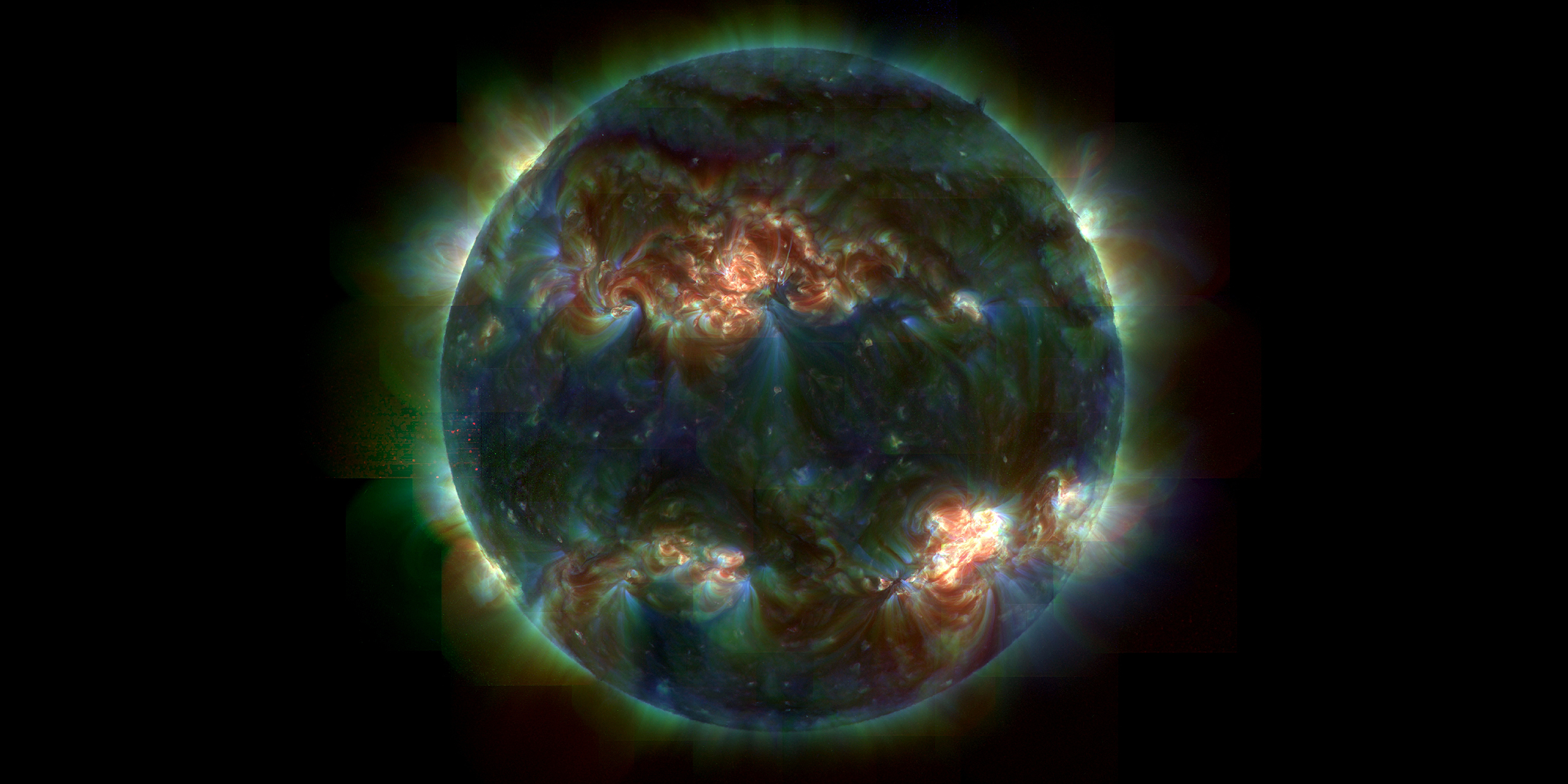Originally published 20 February 2001
“Knowledge has killed the Sun, making it a ball of gas with spots,” wrote D. H. Lawrence in one of his crankier anti-science moments. He couldn’t have been more wrong.
Have you seen the latest photographs of the Sun from the Transition Region and Coronal Explorer, or TRACE, satellite telescope? If not, you don’t know what you’re missing.
The TRACE satellite orbits the Earth a few hundred miles above the surface, north to south, staying pretty much above the dawn-dusk line between day and night, with its eye fixed permanently on the sun. The telescope is about as tall as a man, with mirrors the size of dinner plates. Forty million bucks worth of human ingenuity. It is an extension of human curiosity; it catches knowledge by the bucketful.
Some TRACE images have appeared in the media, although often in black-and-white and on a tiny scale. Try viewing the images full-screen on the Web. If you don’t have access to the Internet, find someone who does and ask to browse these spectacular pics. You’ll never think of the sun the same way again.
What you’ll see is not a god’s glaring eye in the sky, not Helios’s golden chariot, not the yellow circle with radiating spokes we see in kindergarten drawings. Here in the TRACE photographs is the seething hearth of life, the roiling, boiling dynamo of creation. Not a ball of gas with spots, but a dancing, flickering furnace of unquenchable energy.
How to describe it?
Loops of blazing gas — plasma is the technical term — soaring tens of thousands of miles out from the surface of the sun, the voice of the solar Paraclete speaking in tongues of fire. On the scale of these firestorms, the planet Earth shrinks to insignificance — like a pea flicked into the flames of a roaring campfire.
The source of all this energy is at the sun’s core, where the temperature is 10 million degrees. Deep in the belly of the star, protons — the nuclei of hydrogen — are fused together to form the nuclei of helium. And here’s the wonderful thing: The helium nucleus weighs about 1 percent less than the total weight of the four protons out of which it was made. Matter vanishes from the universe. And in its place — pure energy.
Every second at the sun’s core, 660 million tons of hydrogen is converted into 655 million tons of helium by a process known as thermonuclear fusion. The missing 5 million tons is turned into an amount of energy equal to the missing mass times the speed of light squared. The rate of conversion is prodigious, but the amount of hydrogen in a sunlike star is virtually inexhaustible. The sun will burn for another 5 billion years before it has exhausted the hydrogen at its core.
All of that energy produced deep in the sun takes several million years to make its way to the surface, up through a half-million miles of roiling plasma. At the surface, it is hurled into space as heat and light, and as a solar wind of charged particles. Eight minutes later, a tiny fraction of this flux bathes the Earth — to warm the planet, sustain photosynthesis, cause auroras.
Imagine the sun as a basketball. On this scale, the Earth would be a pinhead about 85 feet away. The sun pours out its energy in every direction. Only that part that falls upon the pinhead can we count as ours. It would be nice to think that the sun burns for us alone, but the vast majority of its bounty is destined for deep space.
All of this we have known for a long time, since early in the 20th century. But knowing and imagining are two different things. One can read this stuff on the page of a book — or in a newspaper column — and still not grasp its significance. But just look at those TRACE images, some of them animated, the scale and the power of those solar storms, those fountains of fire. I know, for me, it was the first time I truly imagined the sun as more than a gassy ball with spots.
“The power of the visible is the invisible,” wrote the poet Marianne Moore. The TRACE satellite makes the invisible visible, reveals the sun’s power to the mind’s eye, lets us feel the fire.
Dancing loops of roiling gas, hurled outward by powerful magnetic fields. Millions of tons of the sun’s substance hurled into space like a wet dog shaking off sheets of water, sweeping the Earth with the energy that lights the green fuse of life.
A gassy ball with spots, indeed! Knowledge may sometimes threaten our human-centered sense of self-importance. Knowledge may shatter our consoling myths. But take my word for it: Knowledge is better than ignorance.



